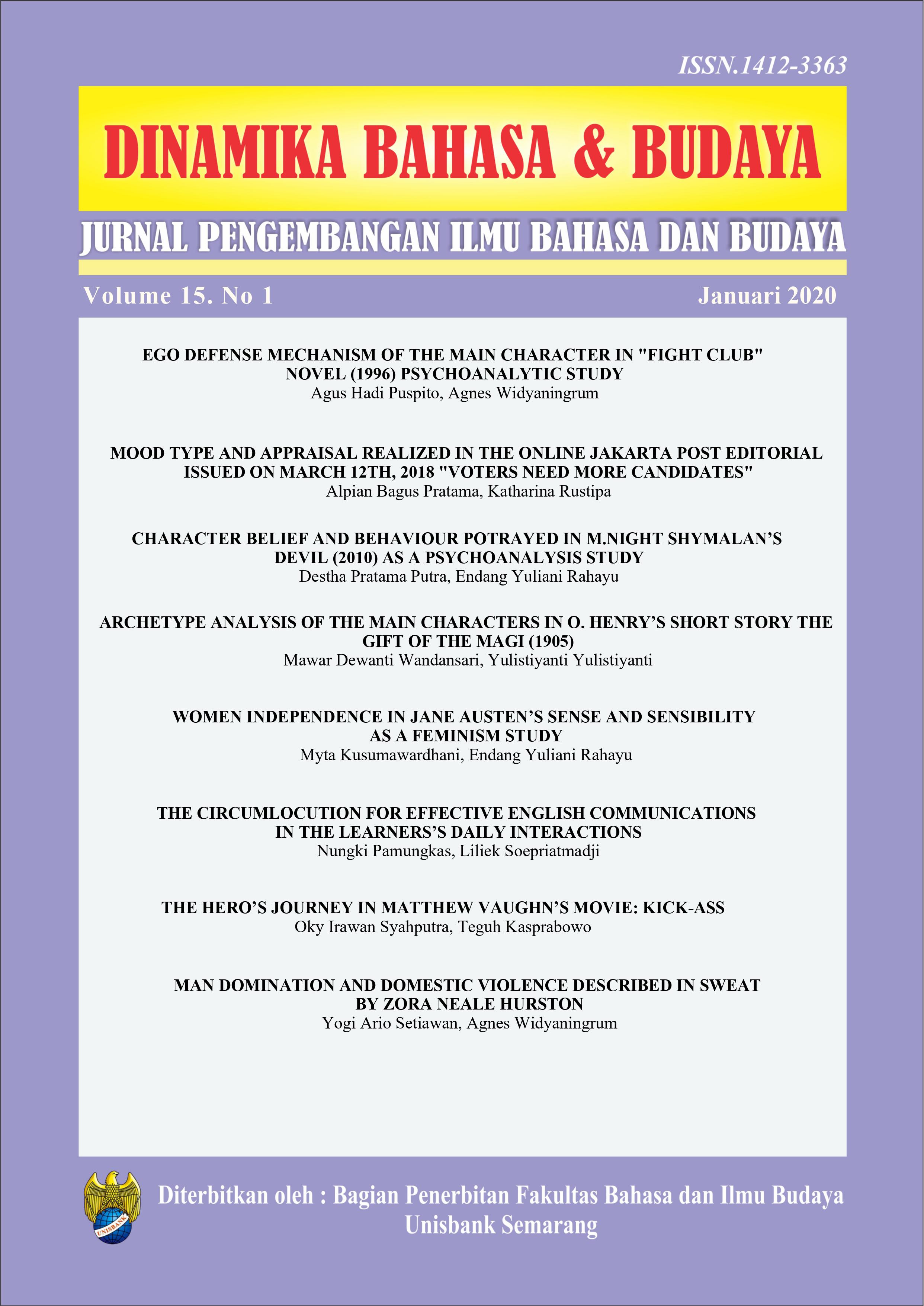THE CIRCUMLOCUTION FOR EFFECTIVE ENGLISH COMMUNICATIONS IN THE LEARNERS’S DAILY INTERACTIONS
Abstract
The current study is aimed to find out the circumlocution especially the kinds and roles of circumlocution used by language learners in their daily interaction. In this research activity, the researcher apply the descriptive qualitative as a research tradition and based on the theory of circumlocution proposed by Arteaga & Llorente (2012). The researcher analyze the gained data with five steps, those were reading the segmented utterances, identifying the utterances, categorizing the utterances that contain circumlocution, tabulating the result of the utterances, and interpreting the findings. In the findings, the researcher found that there are four kinds of circumlocution used by the learners and those were paraphrase, gestures, demonstrate, and switch the code. Paraphrase and gestures are dominant (33,35%), followed by demonstrate (26,68%) and switch the code (6,67%). Alongside the kinds of circumlocution, the researcher also found two roles of circumlocution that were elaborations (15,43%) and confident (26,66%). From the data, the researcher concludes that language learners interact effectively and feel confident by applying paraphrase and gestures.
The copyright of the received article shall be assigned to the journal as the publisher of the journal. The intended copyright includes the right to publish the article in various forms (including reprints). The journal maintains the publishing rights to the published articles.










